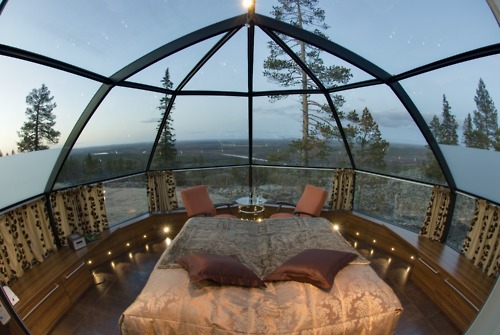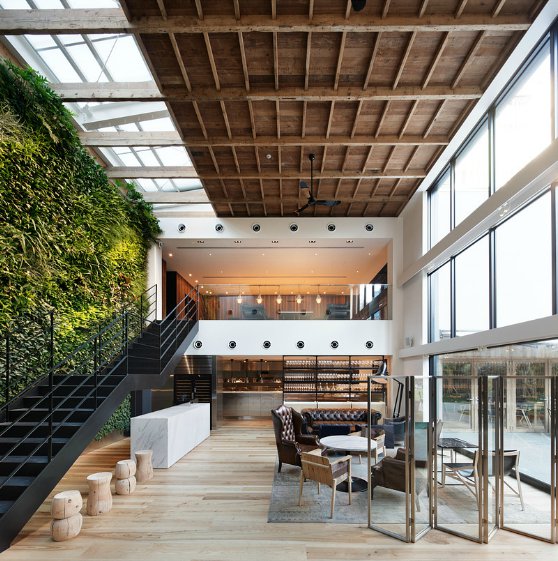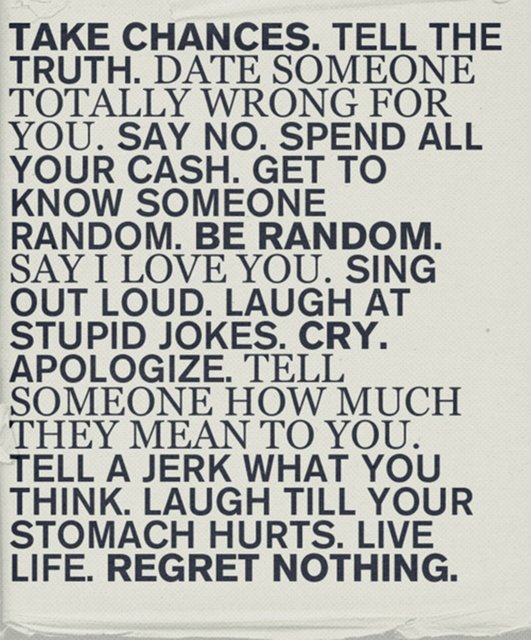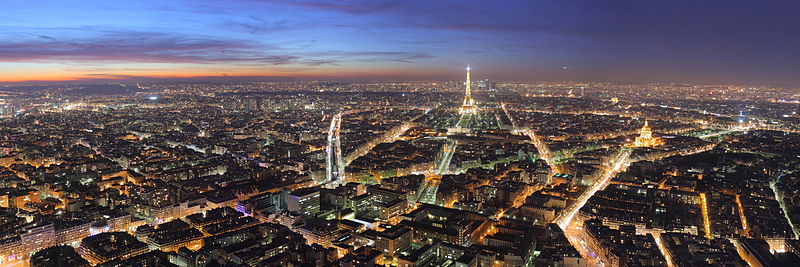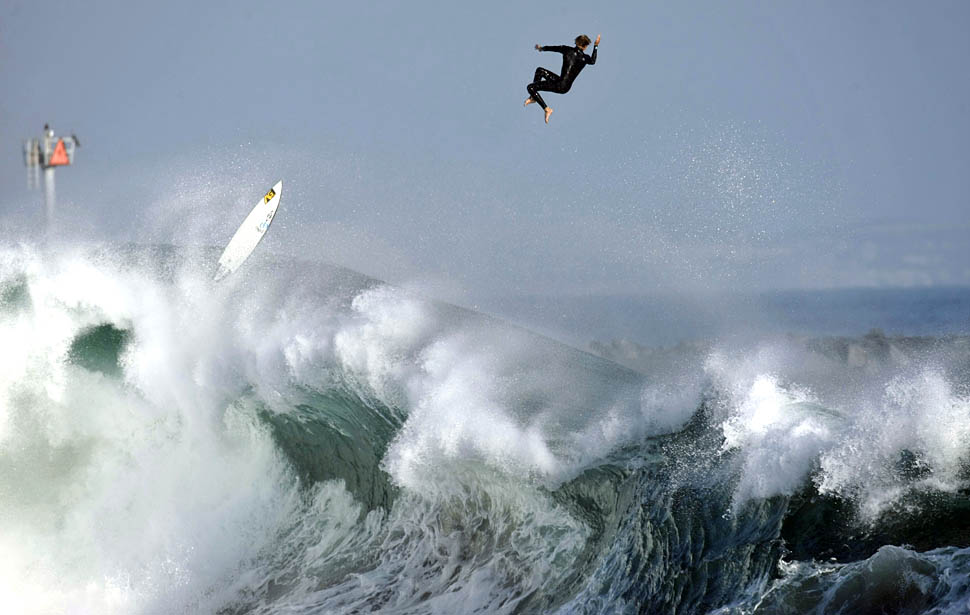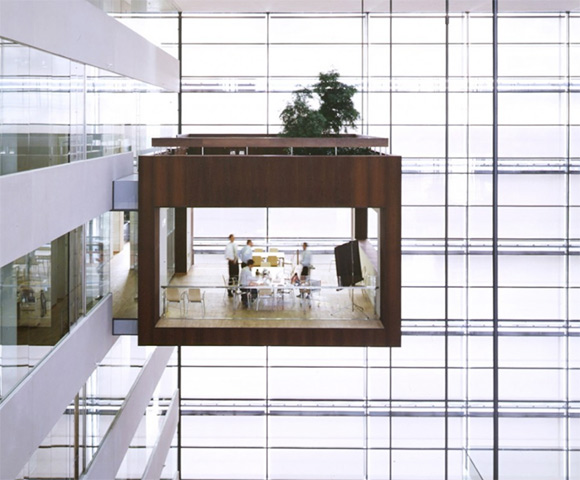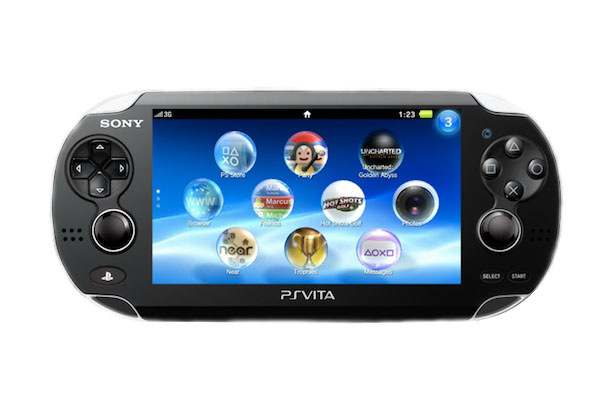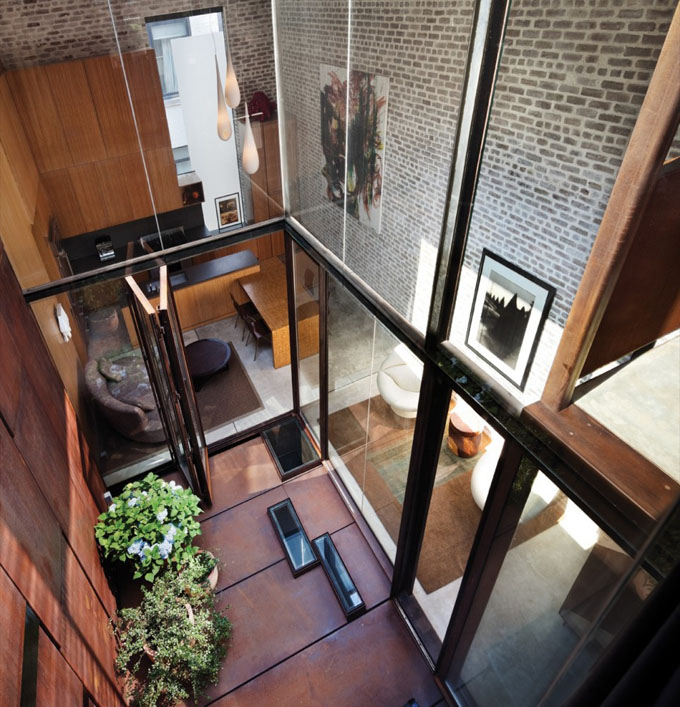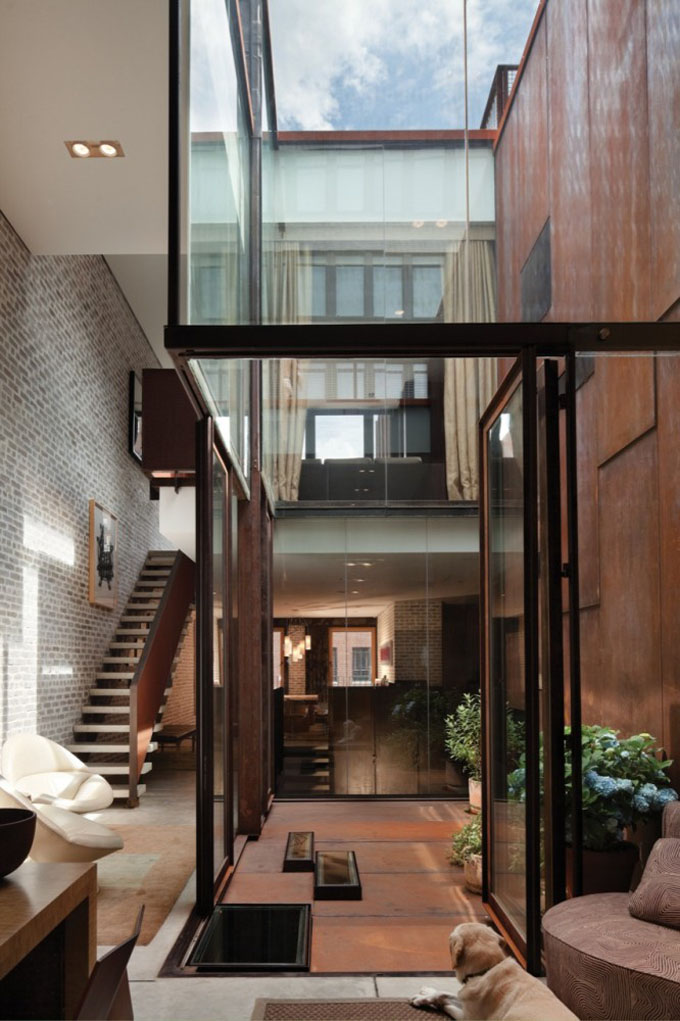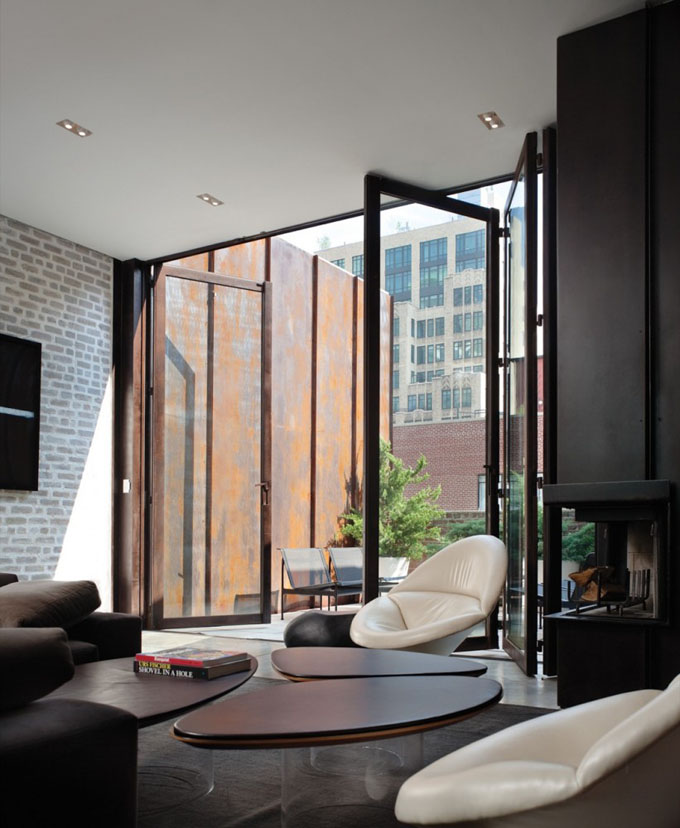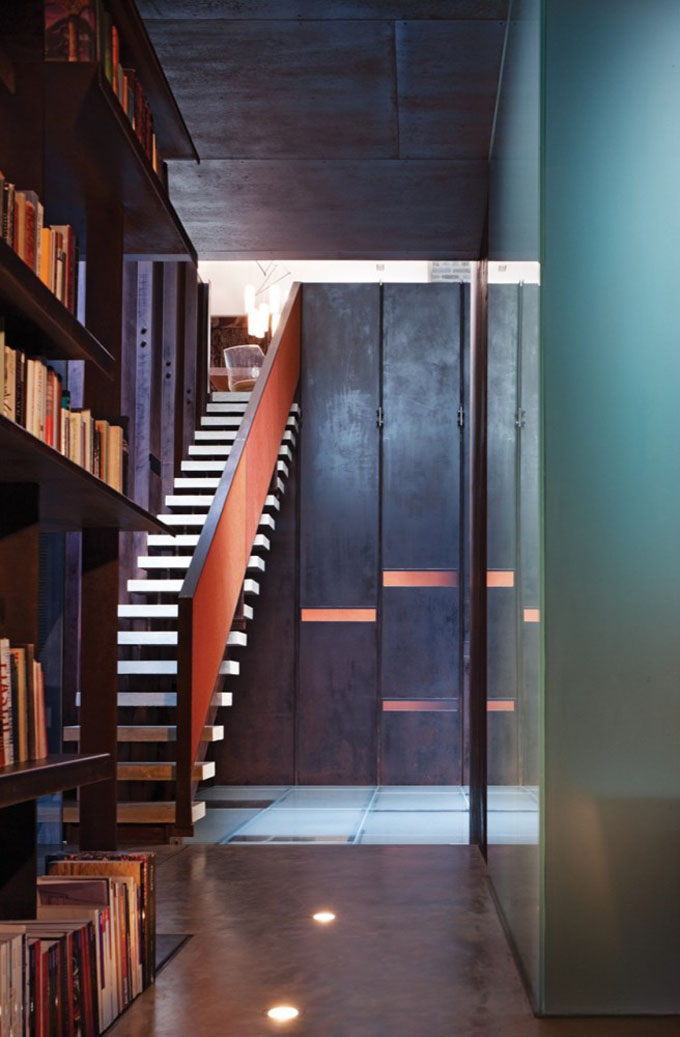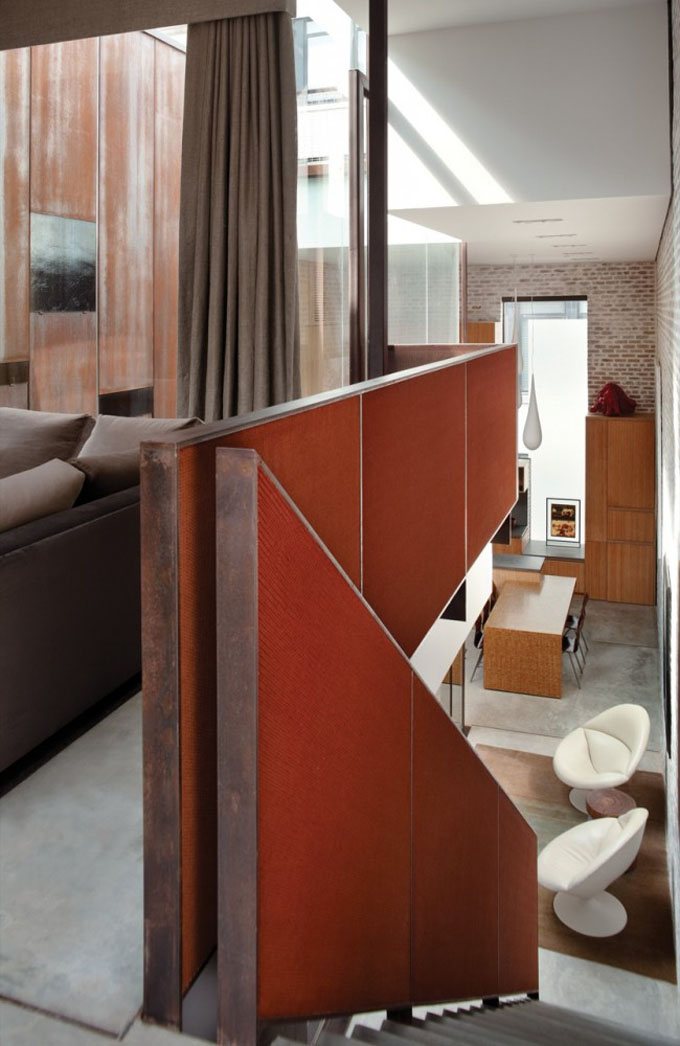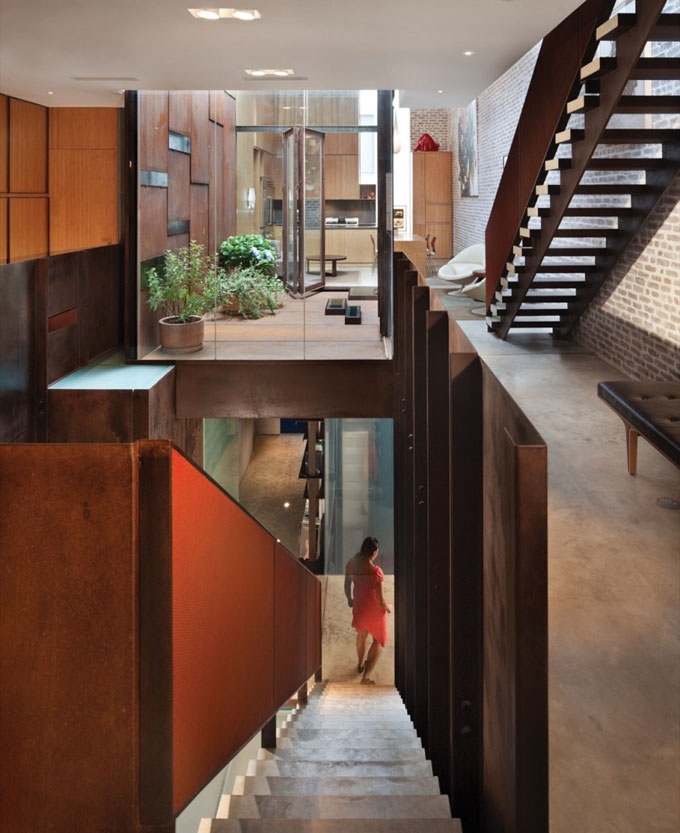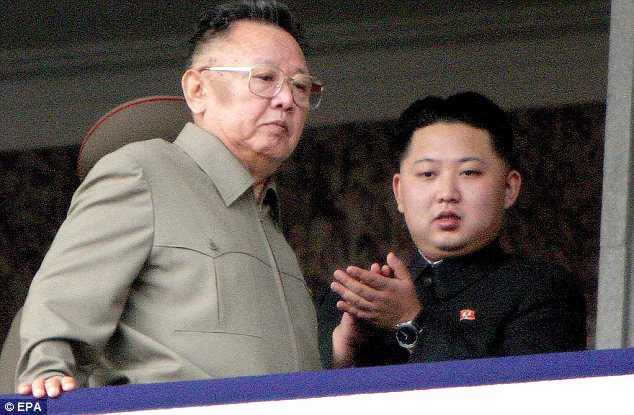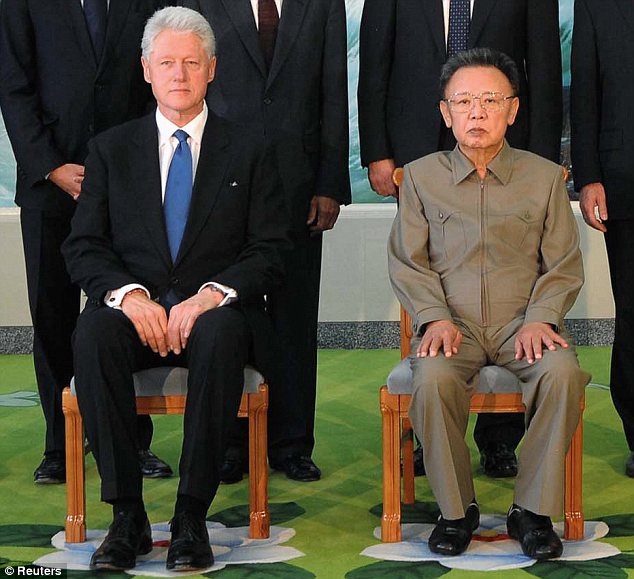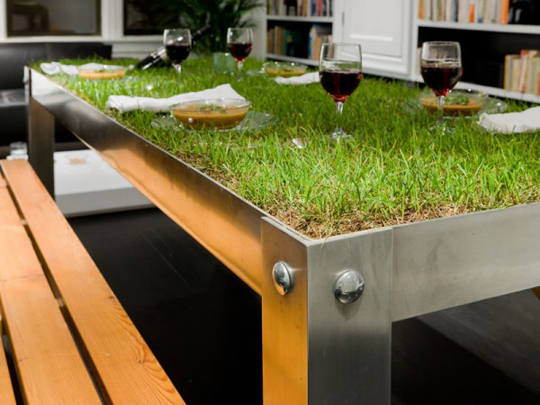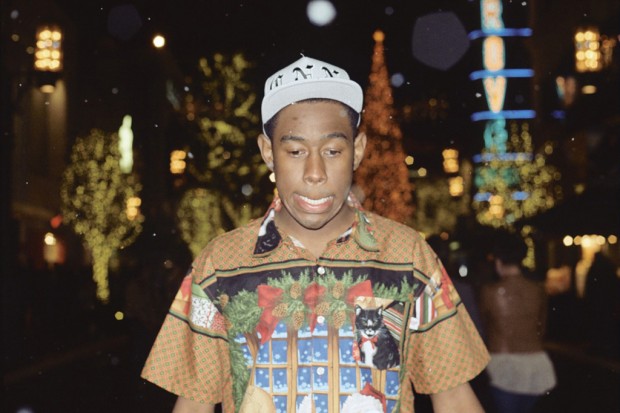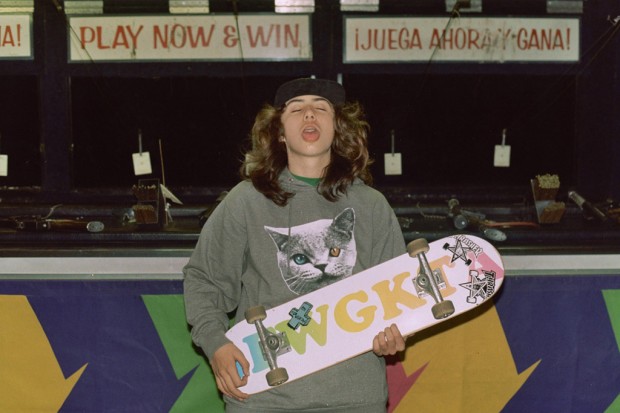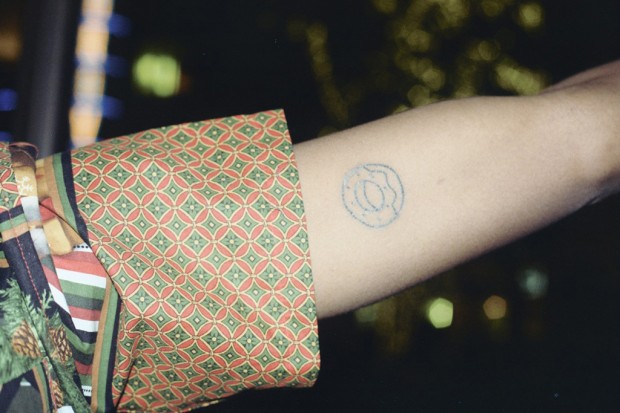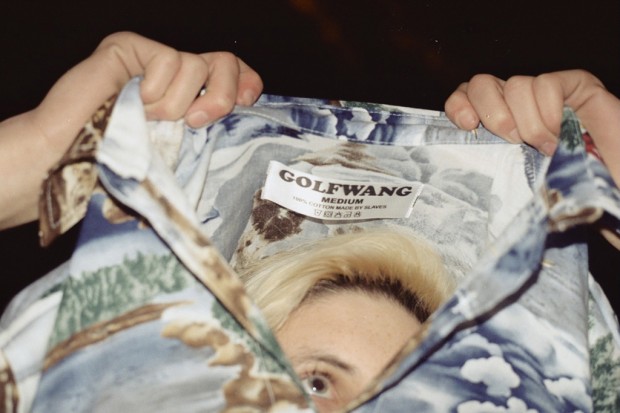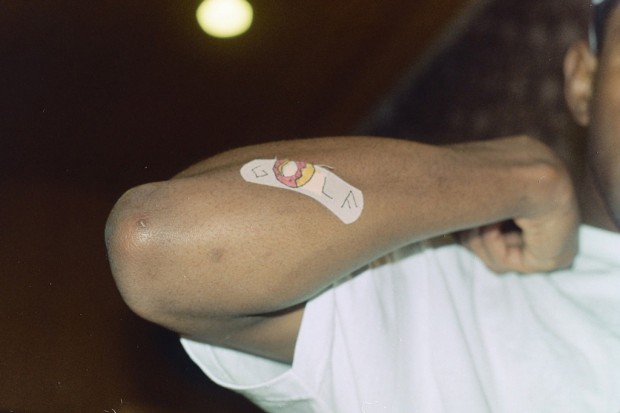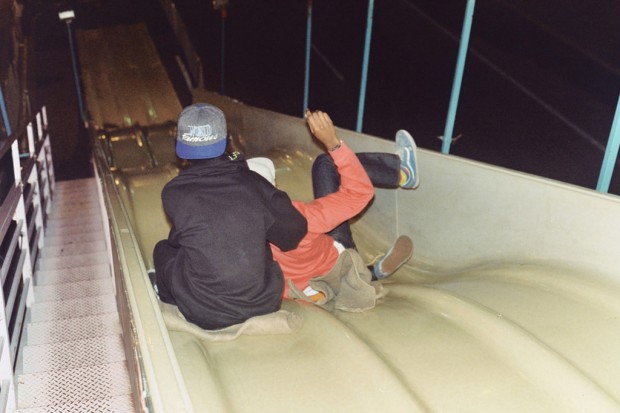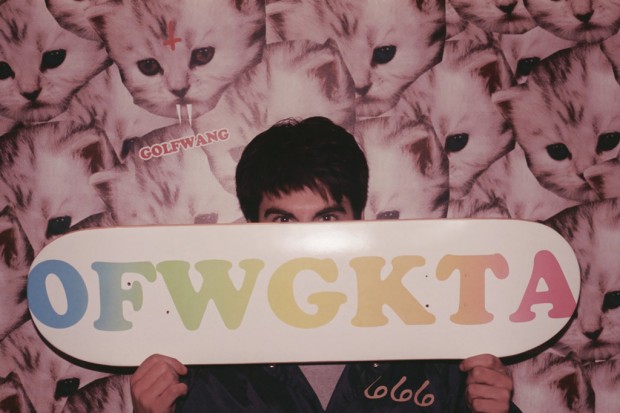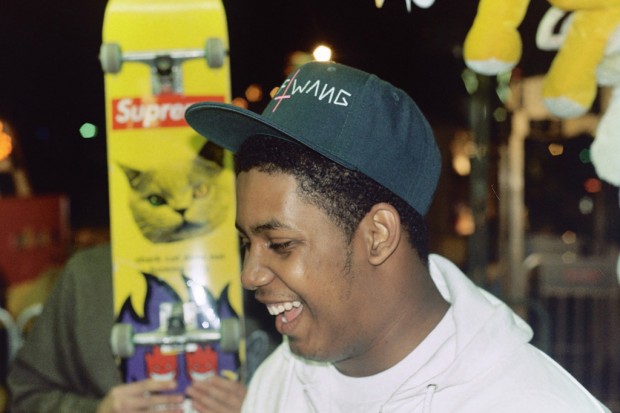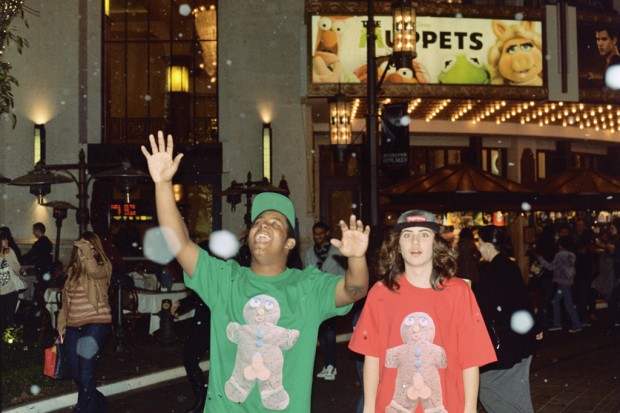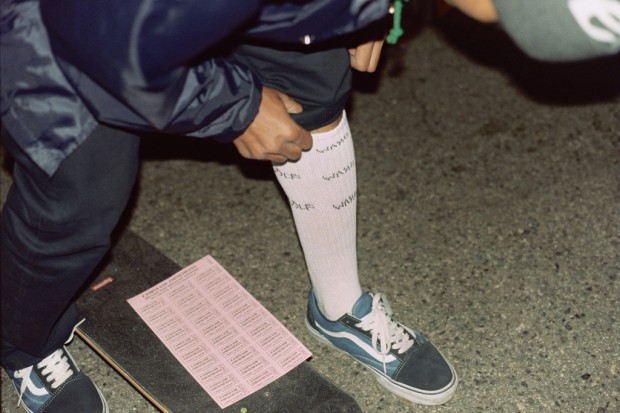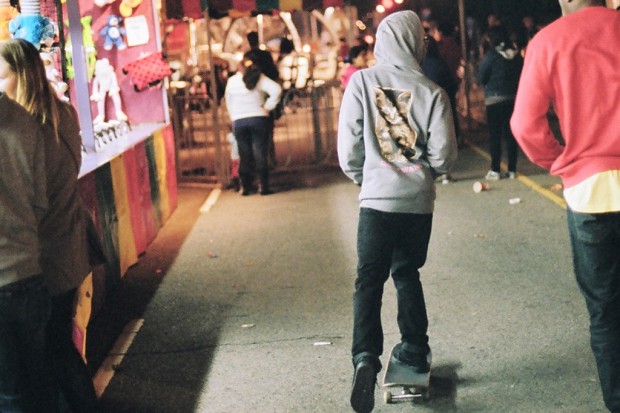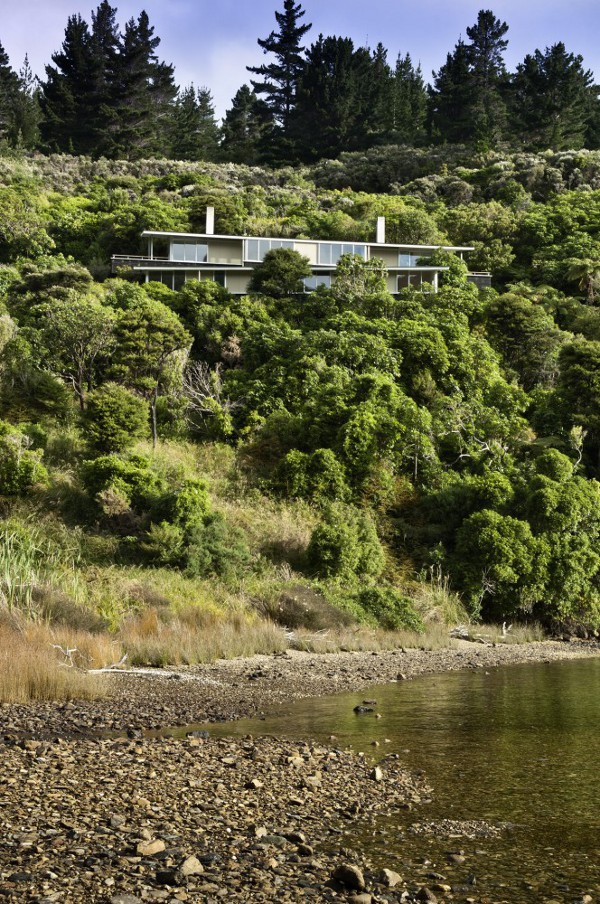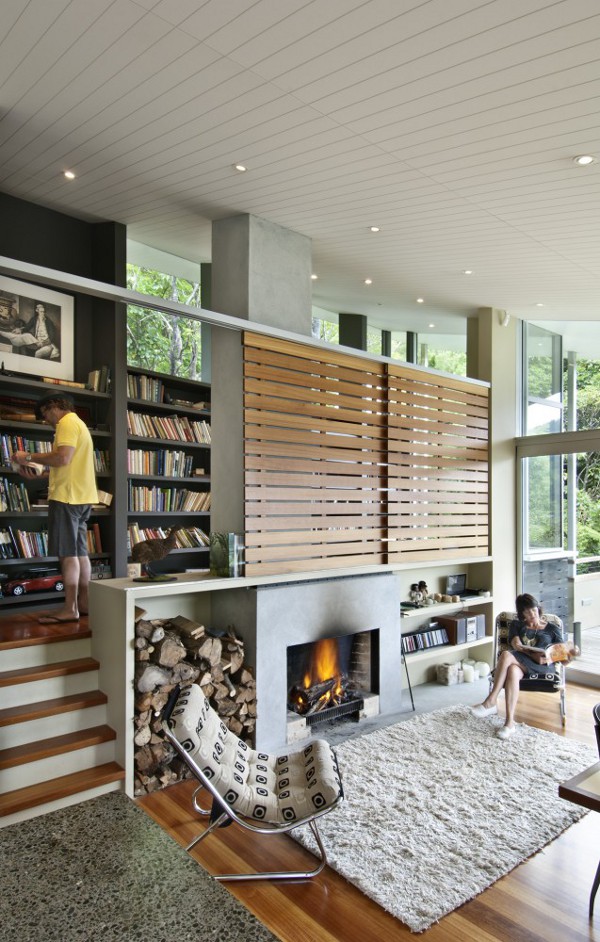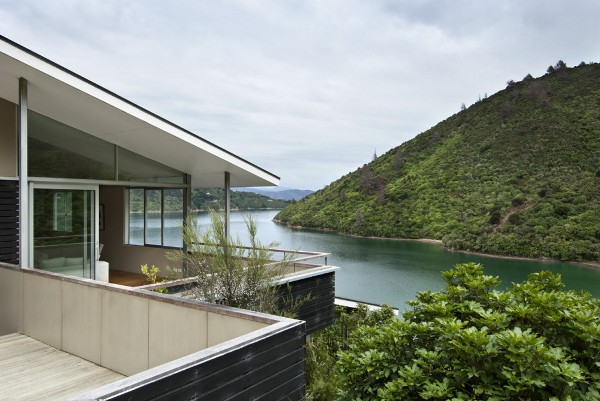Category Archives: TRAVEL
Kakslauttanen Hotel and Igloo Village
Hotel Kakslauttanen is the home of the famous Igloo Village with the unique Glass and Snow Igloos and a World’s Largest Snow Restaurant. In addition their guests can enjoy all the other Lappish winter activities including the Northern Lights (Aurora borealis) visible generally from late August to late April. Surrounded by Lapland’s exotic and stunning scenery, not only can guests sample the peace of sleeping in snow (the snow muffles sound, and provides a great night’s sleep), their glass igloos are fantastic for lying on your bed at night, watching the Northern Lights in the warm.
Mujjo Touchscreen Gloves
 Mujjo Touchscreen Gloves from the Dutch innovators. Designed to act as a second skin that still insulates, the gloves still harness the conductive elements of your skin, thanks to a clever silver-coated nylon knit throughout the glove.
Mujjo Touchscreen Gloves from the Dutch innovators. Designed to act as a second skin that still insulates, the gloves still harness the conductive elements of your skin, thanks to a clever silver-coated nylon knit throughout the glove.
Yoyogi Village – Tokyo
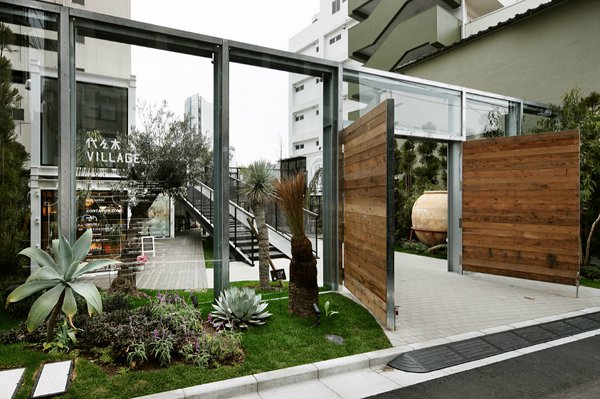
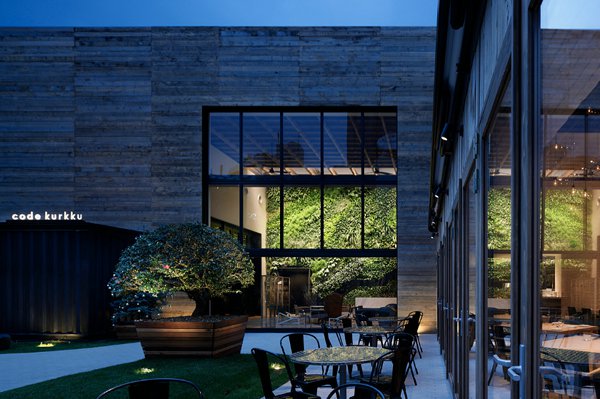
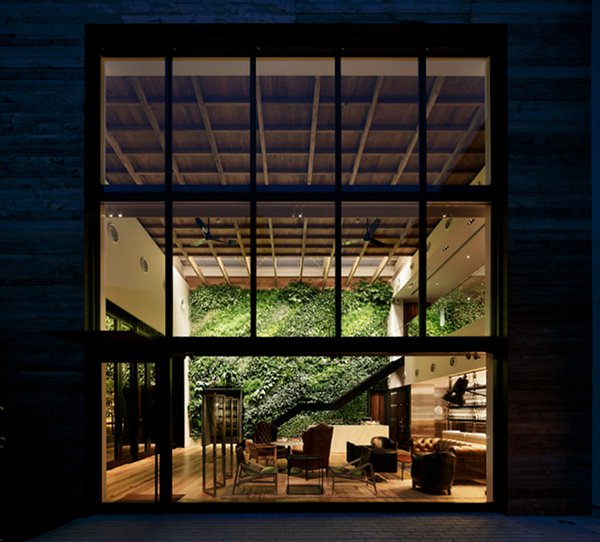
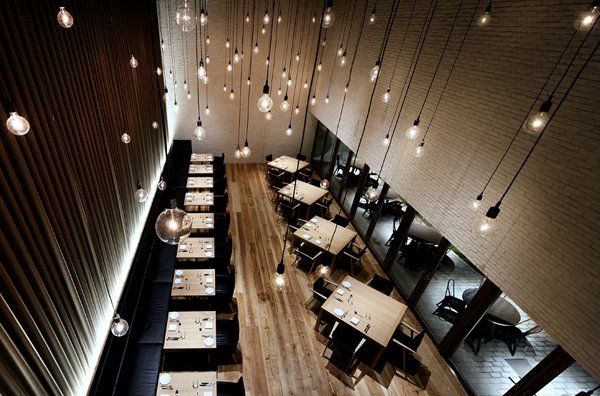
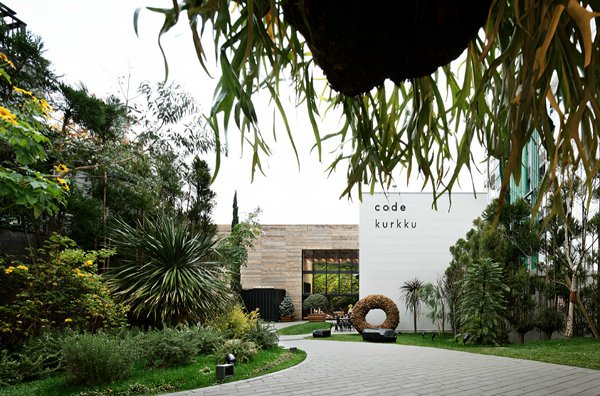
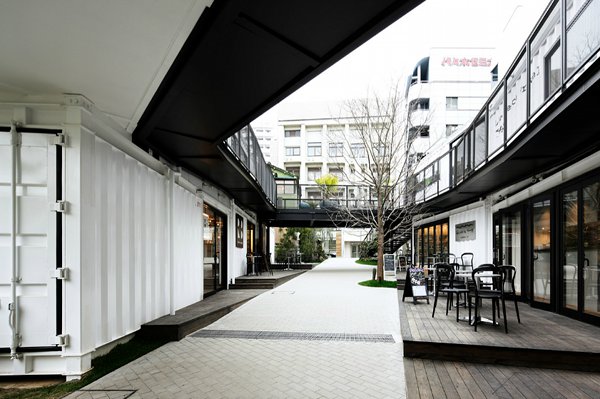 Yoyogi Village is an awe-inspiring urban retreat that boasts a verdant garden sanctuary right in the heart of Tokyo. Designed by Wonderwall and a suite of other designers, the leafy spot is situated very close to the JR Yoyogi Station and houses the Code Kurkku restaurant as well as a tranquil garden filled to the brim with lush greenery. Most enviably of all, a massive living wall that can be seen from just about every part of the restaurant brightens and freshens up the entire dining experience. Step in to experience a small measure of the peace that this extraordinary mini village bestows upon the local Japanese.
Yoyogi Village is an awe-inspiring urban retreat that boasts a verdant garden sanctuary right in the heart of Tokyo. Designed by Wonderwall and a suite of other designers, the leafy spot is situated very close to the JR Yoyogi Station and houses the Code Kurkku restaurant as well as a tranquil garden filled to the brim with lush greenery. Most enviably of all, a massive living wall that can be seen from just about every part of the restaurant brightens and freshens up the entire dining experience. Step in to experience a small measure of the peace that this extraordinary mini village bestows upon the local Japanese.
New Era by You Customization
Finally! New Era has followed suit with such brands as NIKEID to bring you the option to customize New Era Fitted caps and the now popular Snapback caps. Visit NewEraByYou
Paris Fashion Week 2012 Fall/Winter Schedule
Wednesday, January 18, 2012
16.00 CET / 10:00am EST / 12:00am JST (January 19) – Y Project by Yohan Serfati, Maison des Metallos
17.00 CET / 11:00am EST / 1:00am JST (January 19) – John Lawrence Sullivan, Maison des Metallos, salle noire, 94 rue Jean-Pierre Timbaud, Paris 11e
18.00 CET / 12:00pm EST / 2:00am JST (January 19) – Mugler, BETC, Passage du Désir, 85-87 rue du faubourg Saint-Martin, Paris 10e
19.00 CET / 1:00pm EST / 3:00am JST (January 19) – Gaspard Yurkievich
20.00 CET / 2:00pm EST / 4:00am JST (January 19) – Christian Lacroix Homme
21.00 CET / 3:00pm EST / 5:00am JST (January 19) – AMI by Alexandre Mattiussi, 24 rue René Boulanger, Paris 10e
Thursday, January 19, 2012
9.30 CET / 3:30am EST / 5:30pm JST – 3.1 Phillip Lim, BETC, 48 boulevard de Strasbourg, Paris 10e
10.30 CET / 4:30am EST / 6:30pm JST – Kolor, Espace Commines, 17 rue Commines, Paris 3e
11.30 CET / 5:30am EST / 7:30pm JST – Issey Miyake, 5 place des Vosges, Paris 4e
12.30 CET / 6:30am EST / 8:30pm JST – Rick Owens, POPB, salle Marcel Cerdan
13.30 CET / 7:30am EST / 9:30pm JST – Viktor&Rolf, Galerie de Minéralogie, Jardin des Plantes, 36 rue Geoffroy Saint-Hilaire, Paris 5e
14.30 CET / 8:30am EST / 10:30pm JST – Louis Vuitton
16.00 CET / 10:00am EST / 12:00am JST (January 20) – Alexis Mabille, Le Meurice
17.00 CET / 11:00am EST / 1:00am JST (January 20) – Jean Paul Gaultier, 325 rue Saint-Martin, Paris 3e
18.00 CET / 12:00pm EST / 2:00am JST (January 20) – Yohji Yamamoto, 155 rue Saint-Martin, Paris 3e
19.00 CET / 1:00pm EST / 3:00am JST (January 20) – Dries Van Noten
20.00 CET / 2:00pm EST / 4:00am JST (January 20) – Adam Kimmel
21.00 CET / 3:00pm EST / 5:00am JST (January 20) – Steffie Christiaens, TBA
Friday, January 20, 2012
10.00 CET / 4:00am EST / 6:00pm JST – Junya Watanabe
11.00 CET / 5:00am EST / 7:00pm JST – Yves Saint Laurent
12.00 CET / 6:00am EST / 8:00pm JST – Julius, Maison des Métallos, 94 rue Jean-Pierre Timbaud, Paris 11e
13.00 CET / 7:00am EST / 9:00pm JST – GustavOlins, TBA
14.00 CET / 8:00am EST / 10:00pm JST – Juun J., Espace des Blancs Manteaux, 1bis rue des Hospitalières Saint-Gervais, Paris 4e
15.00 CET / 9:00am EST / 11:00pm JST – Kris Van Assche, Les Beaux Arts de Paris, salle Melpomène, 13 quai Malaquais, Paris 6e
16.00 CET / 10:00am EST / 12:00am JST (January 21) – Boris Bidjan Saberi, BETC
17.00 CET / 11:00am EST / 3:00am JST (January 21) – Comme des Garcons Homme Plus
18.00 CET / 12:00pm EST / 4:00am JST (January 21) – Givenchy
19.00 CET / 1:00pm EST / 5:00am JST (January 21) – John Galliano
20.00 CET / 2:00pm EST / 6:00am JST (January 21) – Henrik Vibskov, TBA
Saturday, January 21, 2012
10.00 CET / 4:00am EST / 6:00pm JST – Maison Martin Margiela, TBA
11.00 CET / 5:00am EST / 7:00pm JST – Kenzo
12.00 CET / 6:00am EST / 8:00pm JST – Walter Van Beirendonck, Espaces Commines
13.00 CET / 7:00am EST / 9:00pm JST – Ann Demeulemeester, Les Beaux-Arts de Paris, salle Melpomène, 13 quai Malaquais, Paris 6e
14.00 CET / 8:00am EST / 10:00pm JST – Bernhard Willhelm, TBA
15.00 CET / 9:00am EST / 11:00pm JST – Dior Homme
16.00 CET / 10:00am EST / 12:00am JST (January 22) – Wooyoungmi, Palais de la Femme, 96 rue de Charonne, Paris 11e
17.00 CET / 11:00am EST / 3:00am JST (January 22) – Cerruti, 3 place de la Madeleine, Paris 8e
18.00 CET / 12:00pm EST / 4:00am JST (January 22) – Mihara Yasuhiro, La Maison Rouge, Fondation Antoine de Galbert, 10 boulevard de la Bastille, Paris 12e
19.00 CET / 1:00pm EST / 5:00am JST (January 22) – Damir Doma, Espace des Blancs Manteaux
20.00 CET / 2:00pm EST / 6:00am JST (January 22) – Hermès
21.00 CET / 3:00pm EST / 7:00am JST (January 22) – Raf Simons
Sunday, January 22, 2012
10.00 CET / 4:00am EST / 6:00pm JST – Bill Tornade, TBA
11.00 CET / 5:00am EST / 7:00pm JST – Lanvin
12.00 CET / 6:00am EST / 8:00pm JST – agnes b., TBA
13.00 CET / 7:00am EST / 9:00pm JST – No Edition, TBA
14.00 CET / 8:00am EST / 10:00pm JST – Songzio, Espace des Blancs Manteaux, 1bis rue des Hospitalières Saint Gervais, Paris 4e
15.00 CET / 9:00am EST / 11:00pm JST – Rynshu, Hotel Westin, 3 rue de Castiglione, Paris 8e
16.00 CET / 10:00am EST / 12:00am JST (January 23) – Paul Smith, Couvent des Cordeliers, 15 rue de l’Ecole de Médecine, Paris 6e
17.00 CET / 11:00am EST / 3:00am JST (January 23) – Qasimi, TBA
18.00 CET / 12:00pm EST / 4:00am JST (January 23) – Thom Browne
19.00 CET / 1:00pm EST / 5:00am JST (January 23) – Arnys, Ambassade du Paraguay, 1 rue Saint-Dominique, Paris 7e
20.00 CET / 2:00pm EST / 6:00am JST (January 23) – Acne, Garage Vaugirard, 165 rue de Vaugirard, Paris 15e
Charging The Wedge
One of my favorite spots to see some of the toughest body boarders and surfers take on one of the world’s heaviest shories. Known as ‘The Wedge’ Newport Beach, Calif. — Bobby Okvist, 18, of Newport Beach, bails off his board after riding a large wave at the Wedge.
Suspended Meeting Boxes
The meeting room of Nykredit’s head office by Schmidt Hammer Lassen Architects.
“With its suspended meeting boxes and glazed lifts as well as transverse walkways and balcony floors, the space offers an aesthetically stimulating and inspirational working environment.”
Russian Spring: Thousands Join Vote-Rigging Protests

 In what appeared to be a clear indication of the mounting discontent over Vladimir Putin’s 12-year reign, tens of thousands of Russians joined a massive wave of protests against the alleged rigging in the Dec 4 parliamentary elections. According to agency reports, Moscow saw the biggest show of solidarity by protesters. People descended on Sakharov Avenue in thousands braving harsh wintry conditions. The protesters converged on a broad avenue which is just a couple of miles away from Kremlin.
In what appeared to be a clear indication of the mounting discontent over Vladimir Putin’s 12-year reign, tens of thousands of Russians joined a massive wave of protests against the alleged rigging in the Dec 4 parliamentary elections. According to agency reports, Moscow saw the biggest show of solidarity by protesters. People descended on Sakharov Avenue in thousands braving harsh wintry conditions. The protesters converged on a broad avenue which is just a couple of miles away from Kremlin.
‘PS Vita’ Official Launch
Join GameSpot Asia’s Jonathan Toyad as he unboxes up a Japanese PlayStation Vita and takes you through all the hardware intricacies!
Kidult ‘Ilegal World’
KIDULT ” ILLEGAL WORLD “ from eric on Vimeo.
KIDULT “ILLEGAL WORLD” part II from eric on Vimeo.
Gaining instant notoriety by ruthlessly tagging luxury brand stores such as YSL, Louis Vuitton, Coletteand Supreme, Kidult has stirred up controversy about his motives and intentions behind such acts. In two parts, the videos show Kidult in an altered voice giving his opinions on what graffiti should be while shocking images of war and famine flash on. It almost seems like a mindless film for propaganda.
Sinema TV ‘The Underground Stage: Season 1’ Documentary
A docu-series produced by Sinema TV, The Underground Stage puts the focus on the people behind the creative industry in Singapore. Now in its fifth installment, we get a look at professionals in the fashion industry and their honest opinions.
Featuring various veterans in the fashion industry, such as Thomas Wee, Daniel Boey, Nicholas Wong and photographer, Toon Liang, the docu-series gives us a look at what goes on when the glamour and cliches of the industry has been removed.
In the latest chapter, The Underground Stage sits down with Louis Koh, Afton Chan and Ruth Marbunof Reckless Erica on how they manage their clothing line in the competitive industry.
Rollerman!
Extreme sports at its best: amazing “Rollerman” Jean Yves Blondeau blasting high speed on mountain roads!
Complex X Bing – Largest Sneaker Giveaway Of All-Time
Stop and think for a second about all the hot releases that have eluded you over the years. The ones that got away, the must have sneakers that you missed out on for whatever reason on release day. Now imagine getting another shot at them, all for free no less. Complex is teaming up with Bing for the Magical Holiday Calender for a giveaway that will let you have just that, a heap of heat taken from their rundown of the rarest and most hard to find drops in recent memory. Check out the fitting #23 on the Bing calender to enter and keep your fingers crossed for a Christmas miracle.
Inverted Warehouse Townhouse: New York
The Inverted Warehouse Townhouse has received numerous U.S. awards. It is the creation of Dean-Wolf Architects of New York, where architect Charles Wolf and designer Eunjeong Seong were in charge of the project. The main achievements of Dean-Wolf’s work are cutting the roof open to let the natural light in and then using glass panels to let it shine into the dark centre of the expansive structure.
North Korea’s Kim Jong Il Dies
Bloomberg Article by Bill Austin –
Kim Jong Il, the second-generation North Korean dictator who defied global condemnation to build nuclear weapons while his people starved, has died, state media reported. A government statement called on North Koreans to “loyally follow” his son, Kim Jong Un.
Kim, 70, died on Dec. 17 of a heart attack brought on by mental and physical strain while on a domestic train trip, the official Korean Central News Agency said. Kim probably had a stroke in August 2008 and may have also contracted pancreatic cancer, according to South Korean news reports.
The son of Kim Il Sung, North Korea’s founder, Kim was a chain-smoking recluse who ruled for 17 years after coming to power in July 1994 and resisted opening up to the outside world in order to protect his regime. The likely succession of his little-known third son, Jong Un, threatens to trigger a dangerous period for the Korean peninsula, where 1.7 million troops from the two Koreas and the U.S. square off every day.
“Kim Jong Un’s taking complete control of the helm will not take place for a while due to his youth and inexperienced leadership,” said Yang Moo Jin, a professor at the University of North Korean Studies in Seoul. “The North will likely be under the control of a governing body for about a year.”
A state television announcer wept as she read the news of Kim’s death. Footage was aired of thousands of people in the main square of the capital of Pyongyang chanting in unison and waving Kimjongilia, a flower named after the deceased leader.
Jong Un, is at the “forefront of the revolution,” KCNA said in its statement of the elder Kim’s death. While official reports give Kim’s age as 69, Russian records indicate he was born in Siberia in February 1941.
Won, Stocks Fall
South Korea’s won declined as much as 1.6 percent to a two-month low of 1,177.15 per dollar and government bonds dropped after the news. The Kospi index lost 4.2 percent to 1,762.34 as of 12:38 p.m. in Seoul.
Kim leaves behind an economy less than three percent the size ofSouth Korea’s and which has relied on economic handouts since the 1990’s, when an estimated 2 million people died from famine. The United Nations and the U.S. last year increased economic sanctions imposed as a result of North Korea’s nuclear weapons activities and attacks that killed 50 South Koreans.
Lampooned by foreign cartoonists and filmmakers for his weight, his zippered jumpsuits, his aviator sunglasses and his bouffant hairdo, Kim cut a more serious figure in his rare dealings with world leaders outside the Communist bloc.
“If there’s no confrontation, there’s no significance to weapons,” he told Madeleine Albright, then U.S. secretary of state, in a 2000 meeting in Pyongyang.
Nuclear Tests
Those words took on greater significance in 2009 as Kim defied threats of United Nations sanctions to test a second nuclear device and a ballistic missile, technically capable of striking Tokyo.
The following year North Korea lashed out militarily, prompting stern warnings from the U.S. and South Korea. An international investigation blamed Kim’s regime for the March 2010 sinking of a South Korean naval vessel that killed 46 sailors. Eight months later North Korea shelled a South Korean island, killing two soldiers and two civilians. The act followed reports by an American scientist that the country had made “stunning” advances to its uranium-enrichmentprogram.
Japan Security Meeting
Japanese Prime Minister Yoshihiko Noda’s cabinet held a security meeting after the announcement, while the U.S. issued a statement saying the Obama administration is “closely monitoring” the situation and is contact with South Korea and Japan.
Last year, Kim also set in line his succession plan. Kim Jong Un, thought to be 28 or 29, was first mentioned in official KCNA dispatches on Sept. 28, 2010, when his appointments as general and vice chairman of the Central Military Commission of the party were announced. Jong Un stood at his father’s right side at a military parade the next month, wearing a black suit with a mandarin collar similar to the style worn by his grandfather, who founded the nation after World War II.
His nuclear pursuit was an attempt to counter the advantage in conventional weapons that South Korea was able to build as its economy boomed. When North Korea tested its first nuclear bomb, on Oct. 9, 2006, Kim enhanced his bargaining position with the South and two other old enemies, the U.S. and Japan.
Cult Personality
Kim was groomed to succeed his father for three decades, taking power when the “Great Leader” died in July 1994 to an outpouring of national grief. He extended a cult of personality as the “Dear Leader” even as many of the nation’s 24 million citizens lived on an average income of less than a dollar a day.
In the official version of Kim’s birth, a double rainbow heralded his arrival on Mount Paektu, revered as the birthplace of the Korean people, at a secret guerrilla camp where his father was leading the struggle against Japanese colonial rule during World War II.
Foreign historians say instead that by then the elder Kim was in theeastern Soviet Union where he trained at a Soviet army base, having already retreated from northeastern China, the scene of most of his guerrilla activity. Soviet records show that the year of Kim’s Feb. 16 birth was altered in the official version, to 1942 from 1941. That permitted his milestone birthdays to be celebrated in the same years when the country feted those of his father, who was born in 1912.
Troubled Life
Kim Il Sung and his family returned in 1945 to Pyongyang, which became the capital of North Korea after the government was established in 1948. After the elder Kim took power, his son experienced a troubled family life. A younger brother drowned, and his mother died. His father remarried and the boy clashed with his stepmother and half-brothers.
Official accounts say non-family members including teachers deferred to the son as a little prince. By the time he graduated from Kim Il Sung University in Pyongyang in 1964, he had developed a reputation among the small foreign community as undisciplined and impulsive, a hard-partying womanizer and lover of gourmet food and fast cars.
For three decades, Kim exercised power as a high-level official, rarely traveling abroad or meeting foreign leaders and often going for long periods when his domestic public appearances weren’t mentioned in the state-run media. He was named the heir-designate in 1974 and made co-ruler in 1984.
Movie Buff
Kim was a cinema buff whose personal library included tens of thousands of western movies. Obsessed with improving the country’s film output, he had agents kidnap South Korea’s leading director, Shin Sang-ok, and the director’s actress wife, Choi Eun-hi. They were brought to Pyongyang to work in the local industry and subsequently escaped with tape recordings of conversations they had with Kim.
For more than a decade, Kim also employed a Japanese sushi chef, whose 2003 memoir, “Kim Jong Il’s Chef,” chronicled lavish dinner parties featuring global delicacies.
As deputy and later leader of the party’s propaganda department, Kim led North Korea’s version of China’s Cultural Revolution, remodeling the country’s cinema, opera and other arts to intensify thepersonality cult that deified his father and later himself.
“People of the world, if you are looking for miracles, come to Korea,” the party newspaper said in a pre-Christmas editorial celebrating the junior Kim’s 1980 elevation to the politburo’s inner circle. “Christians, do not go to Jerusalem. Come rather to Korea. Do not believe in God. Believe in the great man.”
That way of looking at the supreme leader “was the work of Kim Jong Il” rather than his father, wrote Hwang Jang Yop, a former propaganda chief who defected to South Korea in 1997. Kim’s economic legacy is a country on the brink of ruin.
North Korean Economy
Until the early 1970s, North Korea’s command economy performed impressively compared with the capitalist system adopted by rival South Korea.
Those roles reversed early in Kim’s tenure as South Korea’s economy took off, though he largely ignored economic realities and lavished funds on grandiose monuments promoting worship of his parents and himself. Most prominent is a 105-story pyramid- shaped hotel buildingdominating the Pyongyang skyline. Started in 1987, the hotel remained under construction and unopened more than two decades later.
Kim remained hesitant to open the country to market forces. During a visit to China in 1983, Chinese leader Hu Yaobang advised him to promote tourism. Kim worried that tourists would be able to identify North Korea’s defenses.
“If Pyongyang is opened up, it will be the same as calling back the forces along the border,” he told the kidnapped director and actress in a 1983 discussion that they secretly taped and later carried out during their escape in 1986. “It’s the same as being disarmed.”
Deadly Walk
Tourists were permitted in the late 1990s, most notably to Mount Geumgang, known for its scenic beauty. In 2008, North Korean troops shot and killed a South Korean tourist there who they said entered a military zone while taking a walk. The resort is now closed to South Koreans.
By the time Kim took power in 1994, Russia and the countries of Eastern Europe had cast off communism and were no longer sending aid. That left China as the main benefactor, accounting for 83 percent of North Korea’s $4.2 billion of international commerce in 2010, according to the Seoul-based Korea Trade & Investment Promotion Agency.
1990s Famine
Hundreds of thousands of North Koreans died in a famine in the mid- and late-1990s. Kim refrained from enforcing the usual tight restrictions on mobility, permitting starving people to travel within the country to find food. Kim hoped to avert a sudden loss of popular support, so that the regime would not “experience meltdown as in Poland and Czechoslovakia,” he said in a 1996 speech that was recorded and later smuggled abroad.
Kim’s closest flirtation with economic overhaul began with a series of legal changes starting in 1998. A new constitution adopted that year called for “a cost-accounting system” for economic management and joint ventures with foreigners in special economic zones.
This led to the opening of Gaeseong Industrial Complex where more than 100 South Korean companies set up shop, hiring North Korean workers. South Korea’s economy is 40 times larger than North Korea’s.
Nuclear Brinksmanship
Kim stepped up his nuclear brinksmanship with the outside world in 2003, when he withdrew from the Nuclear Non- Proliferation Treaty, triggering a flurry of diplomatic activity that spawned the six-party talks involving the U.S., Japan, Russia, South Korea and China. Negotiations intensified after the 2006 nuclear detonation, with North Korea agreeing to shut its nuclear reactor in exchange for shipments of fuel.
Tensions flared again in April 2009 after the UN denounced a ballistic missile test and North Korea said it would withdraw permanently from six-party negotiations and resume uranium enrichment. The regime also fired 17 short-range missiles between May and July.
Kim’s regime tested a second nuclear device in May as well, precipitating additional UN sanctions. The Security Council on July 17 barred five North Korean officials from leaving their country and ordered their foreign assets frozen as punishment for working on nuclear weapons and missiles.
Public Appearances
Kim made two major public appearances in 2009, once in April and another on July 8 to commemorate the 15th anniversary of his father’s death. In footage of the latter event on Korean Central Television, Kim limped and his hair and features seemed thinner than three months earlier.
He bounced back a month later, leveraging the detention of U.S. journalists Euna Lee and Laura Ling to win a visit by former U.S. President Bill Clinton. Clinton flew to Pyongyang on what the U.S. administration insisted was a private humanitarian mission to secure the reporters’ freedom.
Kim was photographed smiling alongside a stony-faced Clinton, who left with the women following a one-hour meeting and dinner with the Korean leader, according to Korean Central News Agency.
“Kim Jong Il inherited a genius for playing the weak hand and by keeping the major powers nervous, continuing his father’s tradition of turning Korea’s history of subservience on its head,” said Michael Breen, the Seoul-based author of “Kim Jong Il: North Korea’s Dear Leader,” a biography. “We have entered an uncertain moment with North Korea.”
Photos from Daily Mail
PicNYC Table
Made by Haiko Cornelissen Archtecten, this PicNYC table is designed for the urban green thumb.
GOLF WANG Lookbook
While Odd Future’s creativity and strong ideas in the music world catapulted the talented collective to fame in 2011, Tyler, the Creator and other members have long expressed interest in other forms of design. On this note, Odd Future recently christened their Golf Wang Pop-Up store on Fairfax Avenue in Los Angeles, which is open through early January. Now, the group has released a full collection lookbook for their brand GOLF WANG, titled “Holiday 1991,” which features an array of graphic items, accessories, skateboard decks. Most of the collection was designed by Tyler himself, the highlights of which include a set of all over print shirts, ‘OFWGKTA’ skateboard decks, and an embroidered ‘Golf Wang’ Hat. For the time being, most of the items in the lookbook are only available at the Fairfax brick-and-mortar shop, however Tyler hinted on his twitter he may be open to the idea of placing some items on Odd Future’s online shop in the future.
Source
Apple Bay House: New Zealand
Far off the beaten path, amongst the untouched nature of New Zealand, the Apple Bay House rises amongst the green-colored hills. This stunning house by Parsonson Architects is only accessible by off-road vehicle or boat.
Salt Boarding – Blank Snowboards
The crew at Blank Snowboards ventured to the Bonneville Salt Flats in Utah for some action sports moments. Being towed at nearly 50 m.p.h.



